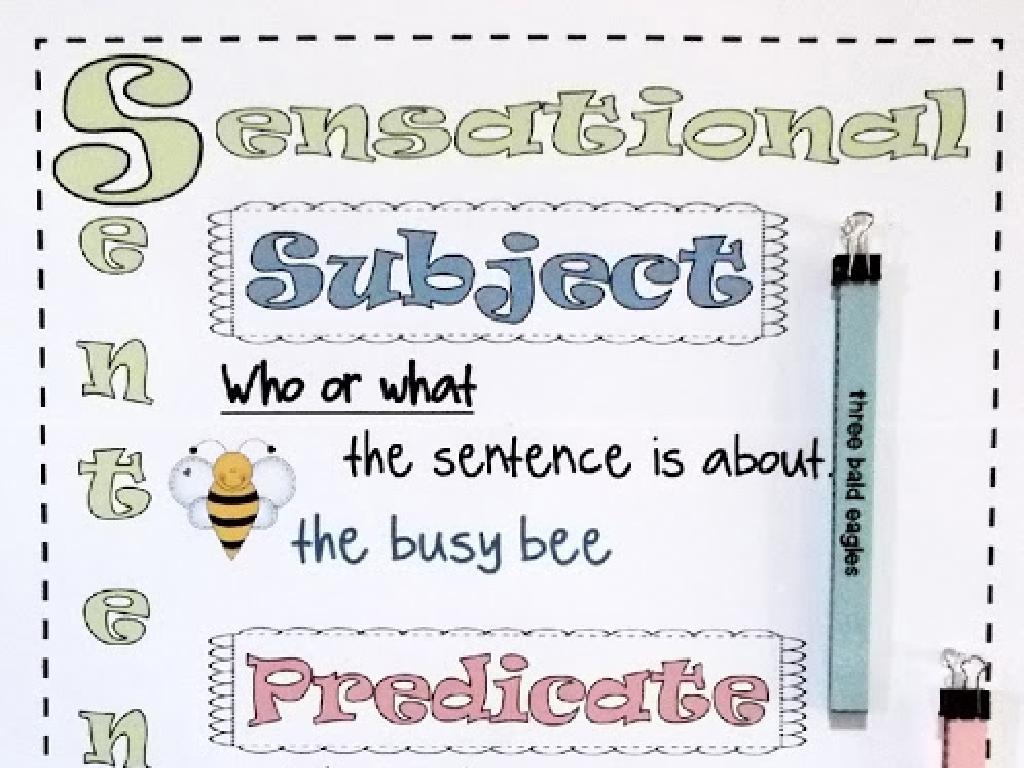Rational Numbers: Equal Or Not Equal
Subject: Math
Grade: Sixth grade
Topic: Rational Numbers
Please LOG IN to download the presentation. Access is available to registered users only.
View More Content
Introduction to Rational Numbers
– What are Rational Numbers?
– Rational Number Definition
– A number expressible as p/q, where p and q are integers and q is not zero.
– Examples of Rational Numbers
– Examples: 1/2, 3/4, 5, 0.75 (3/4 as a decimal)
– Non-examples to Clarify
– Non-examples: Pi (À), square root of 2 ( 2), because they can’t be written as a simple fraction.
|
This slide introduces the concept of rational numbers, which are numbers that can be written as a fraction with integers in both the numerator and denominator, and the denominator is not zero. It’s crucial to emphasize that all integers are rational because they can be expressed as a fraction with a denominator of 1 (e.g., 5 can be written as 5/1). Provide clear examples of rational numbers, including both fractions and their decimal equivalents, to illustrate this point. Also, present non-examples like irrational numbers, which cannot be expressed as fractions, to help students understand the difference. Encourage students to think of their own examples and non-examples to reinforce the concept.
Properties of Rational Numbers
– Rational numbers classification
– Can be positive, negative, or zero.
– Integers as rational numbers
– Every integer is also a rational (e.g., 5 is 5/1).
– Density property of rationals
– Between any two rationals, there’s another rational.
– Equality in rational numbers
– Two rationals are equal if they have the same value.
|
This slide aims to introduce students to the fundamental properties of rational numbers. Rational numbers include all integers, fractions, and decimals that can be expressed as a fraction of two integers. Emphasize that integers are a subset of rational numbers, as they can be written with a denominator of 1. Discuss the density property, which states that there are infinitely many rationals between any two given rational numbers, illustrating the concept with examples. Lastly, explain how to determine if two rational numbers are equal by comparing their values after converting them to a common denominator if necessary. Use number lines and visual aids to help students grasp these concepts.
Equality of Rational Numbers
– When are two rational numbers equal?
– They’re equal if they represent the same value.
– Demonstrating equality visually
– Use number lines and pie charts to show equal values.
– Simplifying fractions to find equality
– Reduce fractions to simplest form to compare.
– Practice: Identifying equal numbers
|
This slide introduces the concept of equality among rational numbers to sixth-grade students. Begin by explaining that two rational numbers are considered equal if they represent the same amount or value, even if they appear different (e.g., 1/2 and 2/4). Use visual aids like number lines and pie charts to help students see this equality. Teach them how to simplify fractions to their simplest form to make it easier to compare and identify equal rational numbers. Provide practice problems where students can apply these concepts to determine if given pairs of rational numbers are equal or not. Encourage students to explain their reasoning during the practice.
Identifying Equal Rational Numbers
– Determine equality of rationals
– Cross multiply to compare
– If cross products are equal, fractions are equal
– Example: 1/2 equals 2/4
– 1×4=2×2 shows 1/2 is equal to 2/4
– Example: 3/4 equals 6/8
– 3×8=6×4 shows 3/4 is equal to 6/8
|
This slide aims to teach students how to identify when two rational numbers are equal. Emphasize that for fractions, equality can be determined by cross multiplication. If the cross products are equal, then the fractions are equal. Use visual aids to show the cross multiplication process for the examples provided. Encourage students to practice with additional examples and to explain their reasoning process when determining if two rational numbers are equal.
Rational Numbers: Not Equal
– When are rational numbers not equal
– Two numbers with different values
– Use subtraction to find differences
– Subtract to show the inequality
– Example: Compare 1/3 and 2/5
– 1/3 – 2/5 = -1/15, showing 1/3 is less than 2/5
– Example: Compare 3/7 and 4/9
– 3/7 – 4/9 = 5/63, showing 3/7 is greater than 4/9
|
This slide aims to teach students how to determine when two rational numbers are not equal by comparing their values. Emphasize that rational numbers are not equal when they represent different quantities. Show students how to use subtraction to find the difference between two rational numbers, which can help in comparing their sizes. Use the examples 1/3 and 2/5, and 3/7 and 4/9 to illustrate the concept. Explain that if the result of subtraction is not zero, the numbers are not equal. Provide additional examples and encourage students to practice with pairs of rational numbers to solidify their understanding.
Comparing Rational Numbers: Practice Session
– Practice comparing rational numbers
– Solve problems as a class activity
– Work on problems together, fostering a collaborative environment
– Explain your reasoning
– Discuss why one number is larger or smaller than another
– Learn from each other’s methods
– Share different approaches to find the best solutions
|
This slide is designed to engage students in a hands-on practice session on comparing rational numbers. Start by explaining that rational numbers can be compared using inequality signs. Present a series of practice problems that the class can work through together, encouraging participation from all students. As they solve each problem, ask them to explain their reasoning, which will help reinforce their understanding and allow them to articulate mathematical concepts. Encourage students to listen to their peers’ explanations, as this can introduce them to different perspectives and problem-solving strategies. The teacher should facilitate the discussion, provide guidance, and ensure a supportive learning atmosphere where students feel comfortable sharing their thoughts.
Class Activity: Rational Number Scavenger Hunt
– Find pairs of equal rational numbers
– Determine if numbers are equal
– Use comparison skills learned in class
– Work in groups to hunt numbers
– Discuss findings with the class
– Share and explain why numbers are equal or not
|
This interactive class activity is designed to reinforce the concept of rational numbers and equality. Students will search the classroom for pairs of rational numbers, which could be hidden as fractions, decimals, or in word problems. Working in small groups encourages collaboration and discussion. As they find numbers, they should apply their skills to determine if the numbers are equal, using methods such as finding common denominators or converting to decimals. After the scavenger hunt, each group will discuss their findings, explaining the reasoning behind the equality or inequality of the numbers they found. This activity not only solidifies their understanding of rational numbers but also enhances their critical thinking and teamwork skills.
Wrapping Up: Rational Numbers
– Recap on rational numbers
– Remember, rational numbers can be fractions, decimals, or whole numbers.
– Homework: Equal or Not Equal worksheet
– Complete the worksheet to practice identifying if rational numbers are equal.
– Next class: Adding & Subtracting
– We’ll explore how to add and subtract rational numbers.
– Review today’s lesson for homework
|
As we conclude today’s lesson, ensure that students have a solid understanding of rational numbers, including their forms and how to determine equality. The homework assignment is a worksheet that will reinforce their ability to identify equal and non-equal rational numbers, which is crucial for their understanding of equivalence. Remind students to review the concepts learned today to prepare for the next class, where we will delve into adding and subtracting rational numbers. This will build on their knowledge and help them understand operations with rational numbers.






